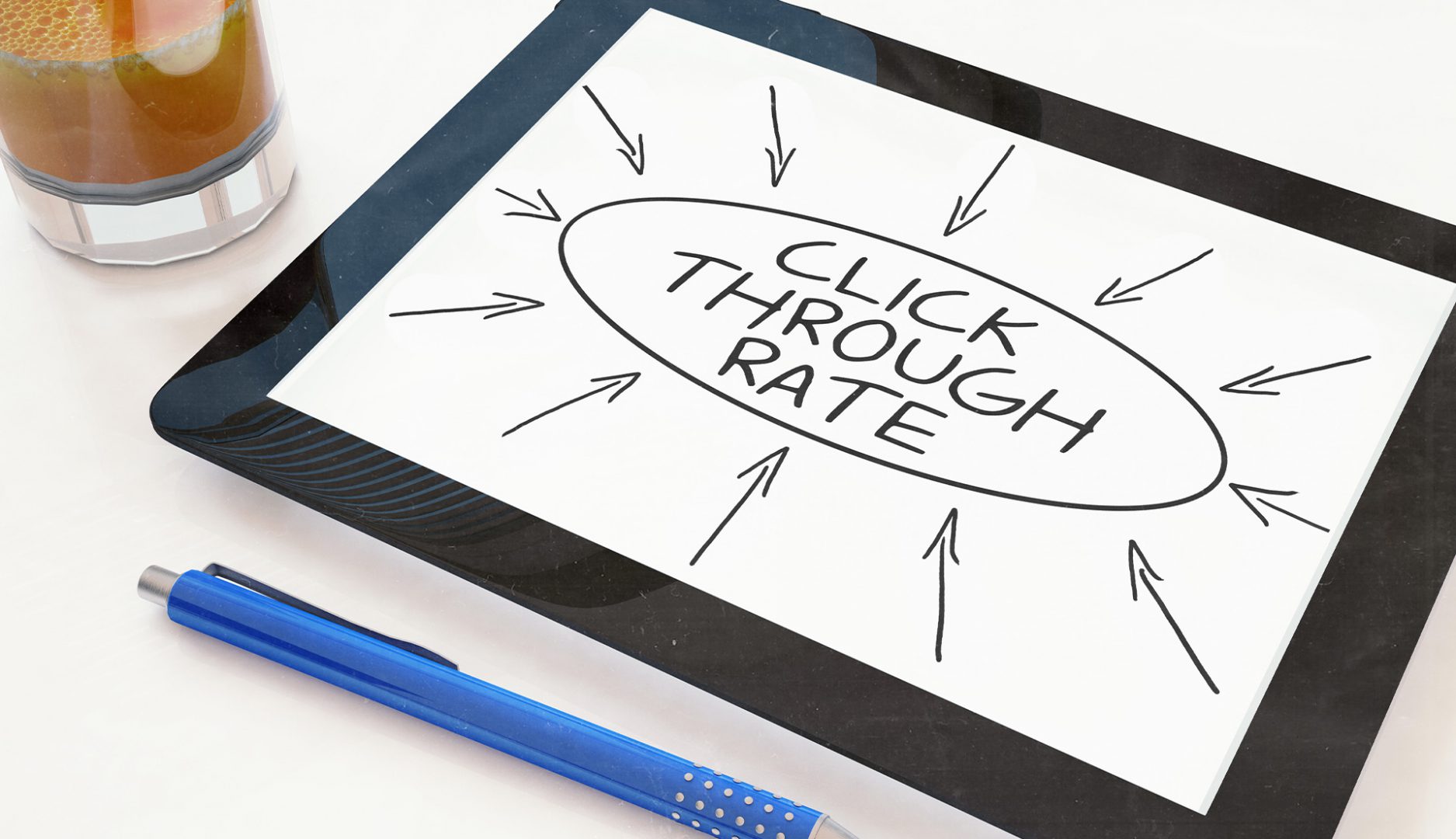When setting up your online business, building a website with the Boxmode website builder is a great first step. But this is just the beginning of your journey. Having set up your site, you now need to consider how to reach your target audience and attract traffic that generates conversions. And if you don’t have a professional website for your business, you can change this immediately!

In this article, we’re going to look at one of the most effective ways to advertise your business and drive sales online: Google Ads.
What Is Google Ads?
Google Ads, previously known as Google AdWords and Google AdWords Express, is an advertising service. Business owners use it to promote their products and services across the web. Google Ads allows you to advertise on YouTube, via Google Search, and on websites relevant to your target audience.
Why Is Google Ads a Smart Investment?
Google processes more than 40,000 web searches every second and several billion searches per year, so Google Ads gives you a chance to capitalize on their popularity.
Running a Google Ads campaign requires you to invest time and money, but it can yield a massive ROI. Although they don’t guarantee that you’ll make a profit, Google has calculated that for every $1 a business invests, they will earn $8 back.
Google Ads can also be a smart strategy when you need to make money in the short term and haven’t yet built up your traffic and reputation via SEO. You can literally pay to appear at the top of Google’s search results.
It also allows you to target a very specific audience. When setting up a Google Ads campaign, you can target your ads based on location, age, device, keywords, and other characteristics. You can also get the most from your advertising budget by displaying ads for a predetermined time every day, for example, during business hours only.

Because Google Ads is a form of pay-per-click (PPC) marketing, you only pay when someone views your Ad or takes action, such as clicking on the Ad and visiting your website. This makes it easy to control your campaign budget. You can pause or stop your campaign at any time.
Finally, bear in mind that your competitors are probably using Google Ads. By paying to appear near the top of Google’s SERPs (Search Engine Results Pages), they may be pushing your site lower down, where your target audience is less likely to see your listing.
Keywords: What Are They, and Why Are They Important?
Keywords are the backbone of a Google Ads advertising campaign. They are words and phrases that align with a user’s search query. For example, if someone searches Google for “how to clean wine stain off carpet,” they will see results for advertisers who have focused on relevant keywords such as “wine on carpet” or “remove carpet stains.”
By incorporating keywords and key phrases in your Google Ads, you’ll help Google present them to your target audience at the right time. Finding the right keywords that are neither too broad nor too narrow may require a lot of trial and error.

When choosing your keywords, you’ll need to pick between four types:
- Exact match keywords. These trigger Google to display your ad only when someone searches for the exact same keyword, or enters a slight variation that carries the same meaning.
- Phrase match keywords. These keywords prompt Google to display your ad in response to searches that contain close or exact keyword matches, plus additional words. The word order does not matter. “Close matches” include semantic variations. For example, if your keyword is “dog collars,” your ad would be displayed if someone searched for “dog leashes and collars,” “blue collars for dogs,” or “collars for puppies.”
- Broad match keywords. These keywords prompt Google to display your ad when someone searches not only for your specified keyword but also for similar search terms. For example, if you target the keyword “pet shop in San Francisco” and choose the broad match option, Google might display your ad to someone who searched for “pets in San Francisco.”
- Broad match modifier keywords. If you want more control over your broad match keywords, you could use broad match modifiers.
Your ad will only show when someone uses search terms that contain the words following the “+.” These words after the “+” can be in any order. For example, if you bid for “+golf course Edinburgh,” your ad won’t be displayed when someone searches for “golf shop near Edinburgh” but would be displayed if someone searched for “golf shop and course near Edinburgh.”
When you set up your campaign, Google Ads will invite you to choose up to 20 keywords per ad campaign. When Google’s users enter these keywords, your ad might appear on the first page of results. The keywords you use will determine how much your campaign will cost.
Use the Google Keywords Planner to find out how many people search for each keyword and the average cost for each. The Planner will also give you new ideas for keywords that could be a good fit for your business. You can also go to the front page of Google, type in a word or phrase, and let the auto-suggest feature give you insights into relevant search examples.
The 3 Main Types of Google Ads
Along with your keywords, you’ll also have to decide which Google Ads format will best suit your needs.
Search Network campaigns. These adverts are displayed on Google Search’s results pages when web users run searches using keywords that describe your services or products. They are usually in text form. Google will place a small “Ad” symbol next to the text, but your copy will otherwise blend in with the organic search results.

If you sell products online, Google Shopping campaigns could be perfect for your business. These Google Ads feature images and product information. Because they show potential customers exactly what a product looks like, they attract more qualified leads and generate more conversions. They are not based around keywords, but on product data you upload to Google’s Merchant Centre.
Video campaigns. Lasting 6 or 15 seconds, your target audience will see these videos immediately before or during YouTube videos. Most people think of YouTube as a content sharing platform, but it’s also the 3rd most popular search engine in the world, with over 2 billion users. Video campaigns work by matching ad keywords to relevant video content.
Google’s Bidding System
Now that you understand what Google Ads can do and how it works, let’s look at how to pay for your campaigns using Google’s bidding system.
In simple terms, it works like this: You choose how much money you are willing to pay every time someone clicks your ad. This amount is called your maximum bid. Every time a user searches Google or lands on a site in the Google Display Network, Google Ads holds an automated virtual auction to decide whose ads appear and in which order they should be displayed.
Google’s algorithms calculate your Ad Rank to determine where to place your ad. The higher the score, the better your position. Your Ad Rank is your Quality Score multiplied by your maximum bid. This Quality Score, which falls between 1 and 10, reflects the ad’s relevance, the quality of the landing page it points to, and the expected click-through rate (CTR).

You can make three types of bids:
- Cost Per Engagement (CPE). You pay a specific amount when someone takes a particular action, such as expanding an ad, playing a video, or entering an email address.
- Cost Per Mile (CPM). The amount you are willing to pay every time your ad is shown to 1,000 people.
- Cost Per Click (CPC). You pay a predetermined amount every time someone clicks on your ad.
Manual Versus Automated Bidding
The default bidding system is manual bidding. It allows you to set a maximum bid for every keyword, and it is the best approach for most beginners. Alternatively, you can use the Google Ads’ automated bidding system. Working within your maximum budget, Google will adjust your bid based on your competitors’ performance. This system can save you time because you won’t have to bid on each keyword. However, by using the automated system, you will lose some control over your budget.
Before You Design Your First Ad, Refine Your Landing Page
When someone clicks on your Ad, they will arrive on a webpage. This is called a “landing page.” A landing page should contain a clear call to action (CTA) that encourages visitors to take a specific action, such as signing up for a free trial or downloading a lead magnet in exchange for their email address. It should also use the same keywords as those in your ad.
Because most of your visitors will be using their mobile devices, your landing pages need to look good on small screens. Google Ads monitors how many people click away immediately from your landing page. If your bounce rate is high, this will affect your Quality Score because it suggests that you aren’t offering a good user experience.
Setting Up Your First Campaign
1. Log in to your Google Ads account
Visit ads.google.com to sign up. If you already have a Google Account, then you can log in with your username and password.

2. Clarify your goals
Think about what you want to achieve. A good way to decide on a goal is to ask yourself, “What would a successful outcome look like?” For example, you may want to increase the number of people who visit your online store. You can also use Google Ads to grow awareness of your brand, increase your registrations for an online event, as well as encourage people to sign up for your email list or generate leads and sales.
3. Decide how much you want to spend
Google makes most of its money via advertising, so it’s in their best interest to make Google Ads simple to use. When you land on the “Your first campaign” page, you’ll be asked to enter the relevant information, including your budget.
There’s no need to spend a lot of money when you’re starting out; around $10 per day could be enough, depending on your keywords. Google recommends setting a maximum CPC bid of roughly $1 to start.
You might not know how much money each visitor is worth to your business. That’s why it’s best to begin with a modest budget, calculate the ROI for your campaign, and then adjust your strategy as required.

4. Tell Google who you want to reach
You can target an audience using one or more strategies, including:
- Affinity audience targeting. This allows you to target people who, by their browsing habits and data, have already shown an interest in a particular topic or industry.
- Life event targeting. You can configure your ad to reach people who are about to get married, graduate college, or experience another major event or milestone.
- In-market audience targeting. This allows you to reach people who have already been browsing for products and services similar to yours.
5. Set your location
If you run an e-commerce store, select a geographical radius that represents your shipping area. If you have a brick-and-mortar store, highlight a reasonable distance around it. Your location helps Google display the most relevant ads to its users, and your location plays a key role. For example, if you own a pet store in Salt Lake City, users searching for “pet store” won’t see your ad if they live in Austin.
6. Design your ad
Effective Google Ads:
- Incorporate your keywords in a way that sounds natural.
- Match your target audience’s intent.
- Are concise and easy to read.
- Acknowledge a pain point and propose a solution.

When you write your ad, you’ll be asked to enter two headlines. Try to incorporate at least one of your keywords. You’ll also be able to enter a brief description, up to 80 characters in length. Make sure your description includes at least one call to action, one of your most important keywords, and specific promotions or prices. You should also capitalize the first letter of every word.
How to Use Ad Extensions
Ad Extensions are optional free tools that can encourage users to engage with your Ads. There are five types:
- Call Extensions. Call extensions let you include a phone number in your ad, allowing your target audience to call you immediately.
- Sitelink Extensions. These extensions let you put additional links in your ad. For example, you could include several links, each going to a different page on your website.
- Promotional Extensions. If you are having a sale or want to highlight a special offer, use promotion extensions.
- Location Extensions. By using a location extension, you can add your phone number and location to your ad. Google will use this information to offer its users a map to help them find your business.
- App Extensions. App extensions allow you to set up a link to an app download for mobile users. Your prospective customers won’t have to search for your app manually in their usual app store, so they are more likely to download it.
Extensions require manual setup. You can add them by clicking the “Ads & Extensions” menu when you are logged into your account, then follow the instructions to select the type of extension you want to use, and when you want it to show.
7. Track your ad’s performance
To ensure that your campaigns are increasing your profits, you need to calculate your return on investment. To do this, you need to evaluate your performance data. Begin by linking your Google Analytics and Google Ads account. This makes compiling data on your traffic, conversions, and other goals much more comfortable.
Pay particular attention to these metrics:
- Click-through rate (CTR). Google calculates your CTR by dividing the number of times your ad has been shown by the number of people who clicked on it. On the search network, the average CTR is 1.91% across all industries. On the display network, it is significantly lower, at 0.35%. These figures are useful as a rough benchmark. However, CTRs vary by industry.
When one of your keywords is doing well, you might decide to increase your bid while reducing your bids for those that aren’t attracting so many clicks and impressions.
- Conversion rate. Using Google’s free Conversion Tracking tool, you can see how many people have taken a specified action after clicking on your ad. You can track actions customers take when they visit your website, install or use your app, or call a phone number.
When you set up conversion tracking, Google will generate a short piece of code you can add to your site. It will recognize when someone has taken action and then send tracking data to your Google AdWords dashboard. You can set up multiple trackers at the same time.
- Cost per conversion. This is your total spend divided by your number of conversions. You can see your conversion data by clicking the “Campaigns” tab when you’re logged into your account.
Split Testing
You can create multiple ads within each campaign and run them at the same time. By analyzing and comparing their performance, you can learn what kinds of ads work best and tweak them for the best results. This is called split testing or A/B testing.

Test one element at a time. If you make two or more adjustments with each new version of your ad, you can’t be certain which change(s) made a difference. For example, if you want to test a new headline, don’t change the price or call to action. Alternatively, you could leave your ad unchanged, but split your traffic across two landing pages to see which converts best.
Understanding Your Search Terms Report
Your search terms report specifies which search terms triggered Google to display your ad. To view it, log in to your Google Ads account and find “All Campaigns” on the left navigation panel. Click it, then click on “Keywords.”
The report alerts you to potential new keywords. For example, if lots of potential customers engage with your ad after entering a particular search term, consider adding it to your campaign as a keyword.
If your ad is showing up for the wrong keywords, add some negative keywords to limit irrelevant matches. Negative keywords prevent Google from serving your ad to people using search terms that aren’t relevant to your product or service; they are keywords you don’t want to rank for.
How to Improve Your Ad’s Quality Score
Making a few adjustments can improve your Quality Score. Google suggests focusing on the following:
- Mobile optimization. Ads and landing pages should all be mobile-friendly. Over 50% of Google searches are made from mobile devices.
- Anticipating and matching user intentions. The best ads answer queries that users enter into Google.
- Relevance. Your keywords and ads need to directly relate to the content of your landing page and website as a whole. Your ad should clearly and quickly convey what kind of product, service, or promotion you are offering.
The golden rule is that keywords need to align with your goals. For instance, if you sell foot massagers and your objective is to encourage people to browse the products on your site, “buy foot massagers” would probably be more effective than just “foot massagers.” If your goal is to establish your site as an authority in a niche, you can use keywords that include questions, such as “reasons for rough skin on feet” or “my feet hurt.”
Google wants to encourage business owners to create relevant ads, so relevance is rewarded. If you create highly relevant ads, keywords, and landing pages, you will usually be awarded a better position on Google’s results page for a lower price.
How to Monitor Your Competitors
Learn from your rivals. Businesses who target your audience and sell similar products will have already tested keywords and bidding strategies. Use a keyword research tool such as SpyFu, SimilarWeb, or Ahrefs’ Keywords Explorer to uncover which keywords work well in your industry.
You can also use these tools to identify keyword bids associated with a specific domain, and those that generate the best ROI for your rivals. Some offer bonus features like Google Ads templates to help you create an attractive copy.
How Long Does It Take to See Results?
You will need to wait for Google Ads to approve your ad before it goes live. The review process is usually complete within one business day. If it meets Google’s standards, its status will change from “Under Review” to “Approved,” and your campaign will start to run. If your ad violates one of Google Ads policies, its status will change to “Disapproved.” You’ll be sent an email explaining the decision.
In theory, your ad could deliver great results overnight. In practice, you can expect to spend three months optimizing your ads. As you gather more data, you’ll be able to refine your ad copy, audience targeting, bidding strategies, and keyword targeting.
It’s easy to get started with Google Ads, but you’ll need to reevaluate your approach continually to get the most from it. However, the payoff is worth it: with so many people relying on Google when researching products online, it’s a golden opportunity.

